John Dwight0419157107, 9780419157106
Table of contents :
Aluminium Design and Construction……Page 2
Preface……Page 13
Acknowledgements……Page 14
List Of Symbols……Page 15
Contents……Page 4
Contents……Page 0
1.1.2 The Name……Page 18
1.1.6 Supposed Health Risk……Page 19
1.2 Physical Properties……Page 20
1.3 Comparison With Steel……Page 22
1.3.2 The Bad Points……Page 23
1.4.1 The Precious Metal Stage……Page 25
1.4.3 Early Applications……Page 26
1.4.5 The First Major Market……Page 27
1.5.1 Growth In Output……Page 28
1.5.2 New Technology……Page 29
1.5.3 Structural Engineering……Page 30
1.5.5 Land Transport……Page 31
1.5.6 Marine Usage……Page 32
1.6. Sources Of Information……Page 33
2.1.1 Primary Production……Page 40
2.2.1 Rolling Mill Practice……Page 41
2.2.4 Tolerance On Thickness……Page 42
2.2.5 Special Forms Of Flat Product……Page 43
2.3.1 Extrusion Process……Page 44
2.3.2 Heat- Treatment Of Extrusions……Page 45
2.3.4 Dies……Page 46
2.3.5 Hollow Sections……Page 48
2.3.6 Extrudability Of Different Alloys……Page 50
2.3.7 Size And Thickness Limits……Page 51
2.3.8 Tolerances……Page 52
2.3.9 Design Possibilities With Extrusions……Page 53
2.4.2 Drawn Tube……Page 55
2.4.3 Welded Tube……Page 56
3.1.3 Holing……Page 57
3.1.4 Forming……Page 58
3.2.1 Bolting And Screwing……Page 59
3.2.3 Riveting……Page 61
3.3.2 Mig Welding……Page 63
3.3.3 Tig Welding……Page 64
3.3.4 Filler Metal……Page 65
3.3.5 Weld Inspection……Page 66
3.4.1 The Process……Page 67
3.4.3 Limitations……Page 69
3.6.1 Use Of Bonding……Page 70
3.6.2 Surface Preparation……Page 71
3.6.5 Applying The Adhesive……Page 72
3.7.1 General Description……Page 73
3.7.3 Anodizing……Page 74
3.7.5 Contact With Other Materials……Page 75
4.1.2 Standardization Of Alloys……Page 76
4.1.3 Work Hardening……Page 77
4.1.4 The O And F Conditions……Page 78
4.1.5 Relation Between Temper And Tensile Strength……Page 79
4.1.7 Heat- Treated Material……Page 80
4.2 Characteristics Of The Different Alloy Types……Page 81
4.2.1 Non- Heat- Treatable Alloys……Page 82
4.2.2 Heat- Treatable Alloys……Page 84
4.3.1 How Mechanical Properties Are Specified……Page 85
4.3.2 Specific Alloys And Their Properties……Page 86
4.3.3 Comments On Certain Alloys……Page 87
4.3.4 Minimum Bend Radius……Page 91
4.3.5 Strength Variation With Temperature……Page 92
4.3.6 Properties Of Forgings……Page 93
4.4.1 Empirical Stress- Strain Relation……Page 95
4.4.2 Stress- Strain Curve For Minimum Strength Material……Page 96
4.5.1 Numbering System……Page 97
4.5.2 Three Useful Casting Alloys……Page 98
4.7.1 Corrosion Of Exposed Surfaces……Page 99
4.7.2 When To Protect Against Corrosion……Page 101
4.7.3 Bimetallic Corrosion……Page 102
5.1.2 Definitions……Page 104
5.1.3 Limit State Of Static Strength……Page 106
5.1.4 Serviceability Limit State……Page 109
5.1.5 Limit State Of Fatigue……Page 110
5.3.1 Derivation……Page 111
5.3.2 Procedure In Absence Of Specified Properties……Page 113
5.3.3 Listed Values……Page 114
5.4.1 General Form Of Buckling Curves……Page 115
5.4.2 Construction Of The Design Curves……Page 116
5.4.3 The Design Curves……Page 117
6.1 General Description……Page 119
6.2 Thermal Control……Page 120
6.3.1 Heat- Treated Material……Page 121
6.3.2 Work- Hardened Material……Page 122
6.3.3 Stress- Strain Curve Of Haz Material……Page 123
6.3.5 Recovery Time……Page 124
6.4.2 Heat- Treated Material……Page 125
6.5.1 General Considerations……Page 126
6.5.3 One- Inch Rule……Page 128
6.5.5 Weld Geometry……Page 129
6.5.6 Single Straight Mig Weld……Page 131
6.5.7 Variation Of Haz- Extent With Weld Size……Page 133
6.5.8 Overlapping Hazs……Page 134
6.5.9 Attachment Welds……Page 135
6.5.10 Definition Of An Isolated Weld ( 10a- Rule)……Page 136
6.6.1 Design Of Members……Page 137
6.6.2 Design Of Joints……Page 138
6.7 Comparison With One-inch Rule……Page 139
6.8.1 Difference Between Tig And Mig Welding……Page 140
6.8.2 Severity Of Softening With Tig Welding……Page 141
6.9 Haz At Friction-stir Welds……Page 142
7.1.2 Types Of Plate Element……Page 143
7.1.4 Element Classification ( Compact Or Slender)……Page 144
7.2.1 Local Buckling Behaviour……Page 145
7.2.3 Slender Internal Elements……Page 147
7.2.4 Slender Outstands……Page 148
7.2.5 Very Slender Outstands……Page 151
7.3.1 Internal Elements Under Strain Gradient, General Description……Page 152
7.3.2 Internal Elements Under Strain Gradient, Classification……Page 153
7.3.3 Slender Internal Elements Under Strain Gradient……Page 155
7.3.4 Outstands Under Strain Gradient, General Description……Page 156
7.3.6 Outstands Under Strain Gradient, Case R……Page 157
7.4.1 General Description……Page 158
7.4.2 Limitations On Stiffener Geometry……Page 159
7.4.4 Location Of The Stiffener……Page 160
7.4.5 Modified Slenderness Parameter……Page 161
7.4.6 Classification……Page 162
7.4.7 Slender Reinforced Elements……Page 163
8.1 General Approach……Page 165
8.2.1 Moment- Curvature Relation……Page 166
8.2.3 Uniaxial Moment, Basic Formulae……Page 167
8.2.4 Effective Section……Page 168
8.2.6 Use Of Interpolation For Semi- Compact Sections……Page 169
8.2.7 Semi- Compact Section With Tongue Plates……Page 170
8.2.9 Biaxial Moment……Page 171
8.3.3 Shear Yielding Of Webs, Method 2……Page 174
8.3.5 Web Buckling, Simple Method……Page 177
8.3.6 Web Buckling, Tension- Field Action……Page 178
8.4.1 Low Shear……Page 180
8.5.1 Webs With Bearing Stiffeners……Page 181
8.5.2 Crushing Of Unstiffened Webs……Page 182
8.6.2 Tongue Plates……Page 183
8.6.3 Transverse Stiffeners……Page 184
8.6.4 End- Posts……Page 185
8.7.1 General Description……Page 187
8.7.3 Equivalent Uniform Moment……Page 188
8.7.4 Limiting Stress For Lt Buckling……Page 189
8.7.5 Slenderness Parameter……Page 190
8.7.7 Effective Length For Lt Buckling……Page 193
8.7.8 Beams Of Varying Cross- Section……Page 195
8.8.2 Beam Of Slender Section……Page 196
9.1.1 Modes Of Failure……Page 198
9.2.2 Allowance For Haz Softening……Page 199
9.2.4 Allowance For Holes……Page 200
9.4 General Yielding Along The Length……Page 201
9.5.2 Column Buckling Stress……Page 202
9.5.3 Column Buckling Slenderness……Page 204
9.6.1 General Description……Page 205
9.6.2 Interaction With Flexure……Page 206
9.6.4 Sections Exempt From Torsional Buckling……Page 207
9.6.6 Torsional Buckling Stress……Page 208
9.6.8 Interaction Factor……Page 210
9.6.9 Torsional Buckling Of Struts Containing Very Slender Outstands……Page 211
9.6.10 Empirical Slenderness Formulae……Page 212
9.7.1 The Problem……Page 216
9.7.3 Section Classification……Page 217
9.7.4 Interaction Formulae ( P+ Uniaxial M)……Page 218
9.7.6 Interaction Formulae ( P+ Biaxial M)……Page 220
9.7.7 Alternative Treatment ( P+ Biaxial M)……Page 221
9.7.9 Eccentrically Connected Angles, Channels And Tees……Page 222
10.2.1 Symmetrical Bending……Page 224
10.2.2 Unsymmetrical Bending……Page 225
10.2.3 Bending With Axial Force……Page 227
10.2.4 Plastic Modulus Of The Effective Section……Page 228
10.3.1 Inertia Of A Section Having An Axis Of Symmetry……Page 229
10.3.2 Inertias For A Section With No Axis Of Symmetry……Page 230
10.3.4 Inertia Of The Effective Section……Page 233
10.4.1 The Torque- Twist Relation……Page 234
10.4.2 Torsion Constant, Basic Calculation……Page 235
10.4.3 Torsion Constant For Sections Containing ‘ Lumps’……Page 236
10.4.4 Polar Inertia……Page 238
10.4.6 Special Lt Buckling Factor……Page 239
10.5.2 Numbering The Elements……Page 242
10.5.3 Evaluation Of Warping……Page 243
10.5.4 Formula For The Warping Factor……Page 244
10.5.5 Bisymmetric And Radial- Symmetric Sections……Page 245
10.5.7 Monosymmetric Sections, Type 1……Page 246
10.5.8 Monosymmetric Sections, Type 2……Page 247
10.5.9 Asymmetric Sections……Page 249
11.1.1 Types Of Fastener……Page 251
11.1.2 Basic Checking Procedure……Page 252
11.1.3 Joints In Shear, Fastener Force Arising……Page 253
11.1.4 Joints In Shear, Fastener Resistance……Page 254
11.1.7 Joints In Tension, Fastener Resistance……Page 256
11.1.9 Comparisons……Page 257
11.2.1 General Description……Page 259
11.2.4 Serviceability Limit State ( Shear Loading)……Page 260
11.2.5 Bolt Tension And Reaction Force……Page 261
11.2.6 Slip Factor……Page 262
11.3.1 General Description……Page 263
11.3.2 Basic Checking Procedure……Page 264
11.3.3 Weld Force Arising……Page 265
11.3.4 Calculated Resistance, Weld- Metal Failure……Page 266
11.3.5 Calculated Resistance, Fusion- Boundary Failure……Page 268
11.3.6 Welded Joints Carrying Axial Moment……Page 269
11.3.7 Welds Under Combined Loading……Page 270
11.4.1 General Description……Page 271
11.4.2 Specification Of The Adhesive……Page 272
11.4.4 Effect Of Moisture……Page 273
11.4.5 Factors Affecting Choice Of Adhesive……Page 274
11.4.8 Mechanical Testing Of Adhesives……Page 275
11.4.9 Glue- Line Thickness……Page 276
11.4.10 Properties Of Some Selected Adhesives……Page 277
11.4.11 Resistance Calculations For Bonded Joints……Page 281
11.4.12 Testing Of Prototype Joints……Page 283
12.1 General Description……Page 284
12.2 Possible Ways Of Handling Fatigue……Page 286
12.3.1 Constant Amplitude Loading……Page 287
12.3.4 Stress Range……Page 288
12.3.5 Stress- Range Spectrum……Page 289
12.4.1 Method A……Page 290
12.4.2 Method B……Page 292
12.5.1 The Bs. 8118 Classification……Page 293
12.5.3 Bonded Joints……Page 294
12.6 Endurance Curves……Page 295
12.7 Instructions To Fabricator……Page 296
12.8 Improvement Measures……Page 297
12.9.2 Endurance Curves For Steel Bolts……Page 299
12.9.3 Variation Of Bolt Tension……Page 300
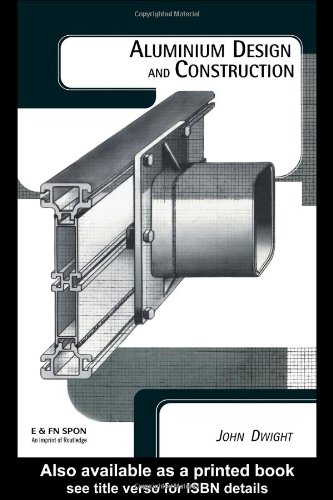
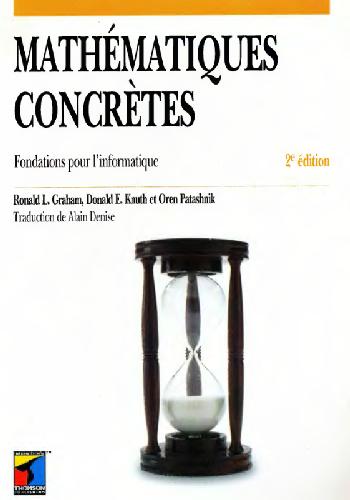
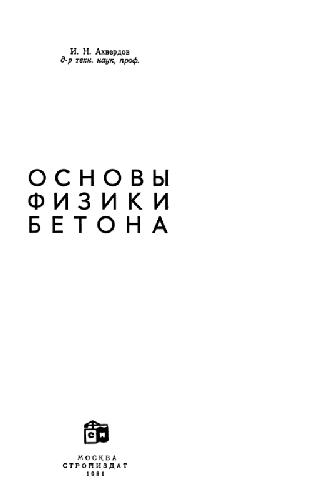

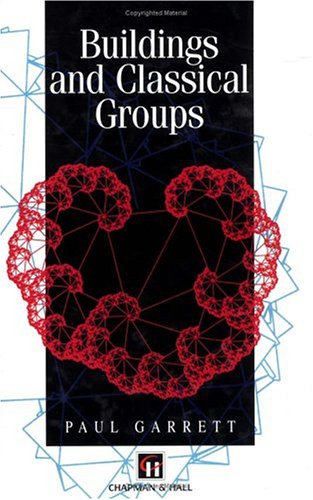
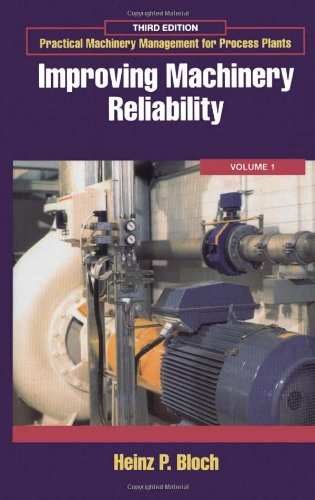

Reviews
There are no reviews yet.